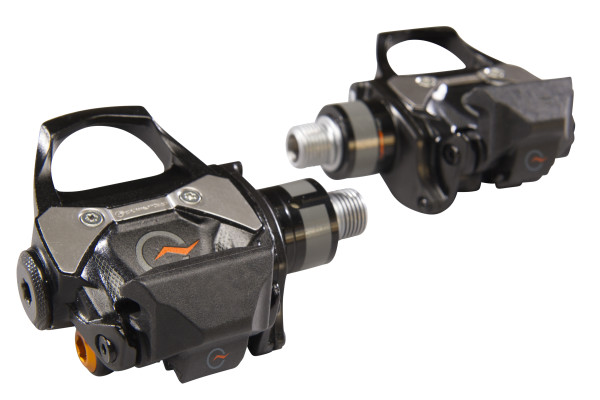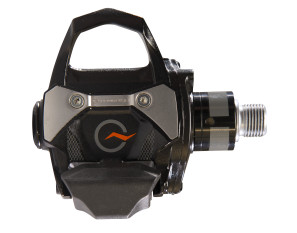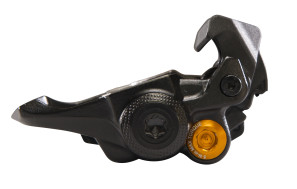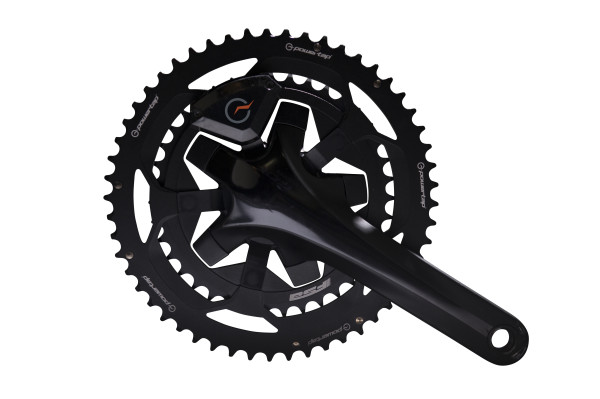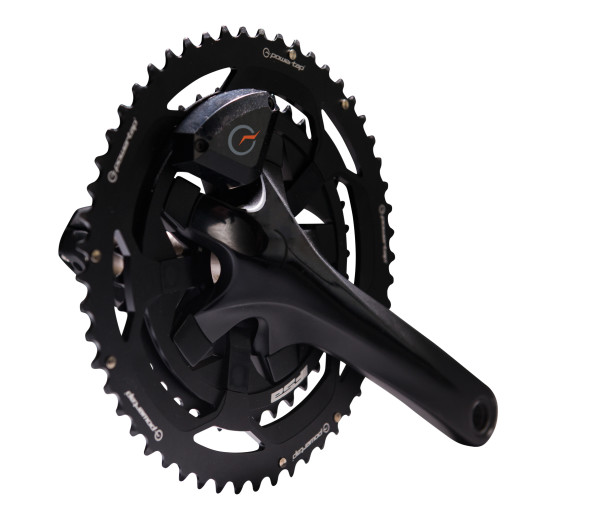Already the leader in hub based power meters, PowerTap is ready to take a pull at the front of the power market once again. To get there the Wisconsin based company is simultaneously launching new branding, an improved website, but most importantly – two new power meter platforms. Entering their product line along side of the current hub based power meters like the G3 and GS, PowerTap is looking to cover all of the power bases with the new P1 pedal based power meter, and the C1 chain ring based unit.
Adhering to the PowerTap ethos of accuracy, simplicity, and value, the new options will make PowerTap one of the only companies to offer power measurement at 3 different positions on the bike…
Built around a Look Keo compatible cleat interface, the new P1 power meter is PowerTap’s answer to a “plug and play” system of measurement. The ability to simply install the pedals on any of your bikes without the need to calibrate them or account for the installation angle. Offering independent measurement for precise left/right pedal dynamics, both pedals use a AAA battery that will provide around 60+ hours of battery life.
Like the new C1 power meter below, the P1 pedals are both Bluetooth SMART and ANT+ compatible making them perfect companions for the PowerTap Joule or smart phone based training apps.Weighing in at 398g per pair; the pedals add about 118-150g per pair compared to Shimano Dura Ace, Campy Record, or Keo Classic pedals.
On the crank side of things, PowerTap has decided to utilize a chainring based system for the C1 power meter. Utilizing chainrings from FSA that are built to accept the PowerTap system, the chainring/power unit bolts to 5×110 BCD cranks and will be available in multiple chainring configurations (50/36, 52/36, and 53/39). Also Bluetooth SMART and ANT+ compatible, firmware updates are carried out with OTA (over the air wireless), and the entire system runs on CR2032 batteries which should provide around 200 hours of battery life. While the chainrings are specially shaped to fit the power meter, the actual electronics are sandwiched between the crank arms and the chainrings so that worn rings can be replaced in the future. Compared to standard FSA chainrings, the system adds 288g fully loaded.
Pricing for the P1 set is estimated to run about $1,200 while the C1 complete set will run about $700.
Other news from PowerTap includes the new G3 Disc hub which sees a dramatic 180g weight reduction over the previous model (now 350g). Available in 24 and 28 straight pull versions, the hub is compatible with 142×12 or 135mm QR. The 6 pawl freehub design is offered in Shimano/SRAM or XD, and the hub requires a proprietary disc rotor that is available in 160mm. Also compatible with Bluetooth SMART and ANT+, the hub is a perfect complement to the PowerTap Joule GPS+ which adds Bluetooth SMART connectivity as well.
